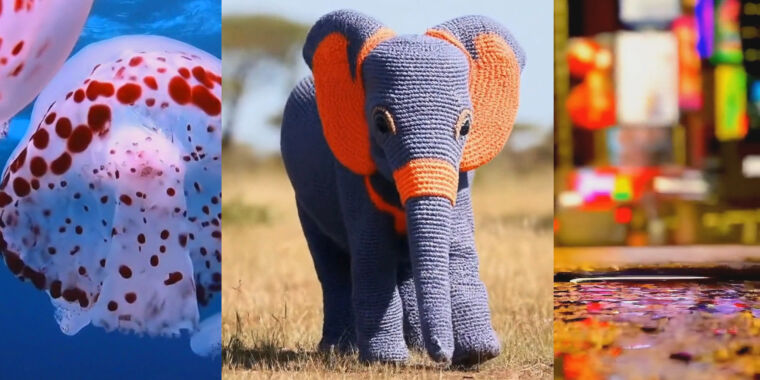Google Unveils Cutting-Edge AI Video Synthesis Model
During Google I/O 2024, Google introduced Veo, a groundbreaking AI video synthesis model that rivals OpenAI’s Sora. Veo boasts the ability to construct high-definition videos from text, images, or video inputs, crafting 1080p videos exceeding one minute in duration. Furthermore, Veo facilitates video editing based on textual directives, presenting an innovative approach to video creation, although it has not yet been widely released.
Veo’s capabilities extend beyond mere video generation; it allows users to edit existing videos through textual commands, ensuring visual coherence across frames, and has the potential to create video sequences lasting over 60 seconds from a single prompt or series of prompts forming a cohesive narrative. Google asserts that Veo can fabricate intricate scenes and apply cinematic effects like time-lapses, aerial shots, and diverse visual styles.
Advancements in Image and Video Synthesis Models
Since the launch of DALL-E 2 in April 2022, there has been an influx of image and video synthesis models that empower individuals to craft detailed visuals using textual descriptions. Although these technologies are still evolving, both AI image and video generators have made significant strides in enhancing their capabilities.
OpenAI’s Sora, a prominent video generator, has garnered attention for its impressive features akin to traditional video production. While OpenAI has yet to provide widespread access to Sora, Google’s Veo emerges as a promising competitor in the realm of AI video synthesis, offering comparable capabilities to Sora.
Exploring Veo’s Potential
Although Google has exclusively showcased cherry-picked demonstration videos on its website, offering glimpses of Veo’s prowess, it remains crucial to approach these displays with caution, as the showcased results may not represent the model’s typical performance.
Veo’s sample videos showcase scenarios like a cowboy on a horse, a fast-tracking shot through a suburban street, kebabs grilling, a time-lapse of a sunflower blooming, among others. Notably absent are detailed human depictions, historically posing challenges to AI models in generating convincing human images and videos.
Technological Advancement in Video Generation
Google emphasizes Veo’s foundational innovation by building upon previous video generation models such as Generative Query Network (GQN), DVD-GAN, Imagen-Video, Phenaki, WALT, VideoPoet, and Lumiere. To enhance quality and efficiency, Veo incorporates more detailed video captions in its training data and incorporates compressed “latent” video representations.
Furthermore, Veo supports filmmaking commands, enabling users to apply editing directives to initial video inputs, creating customized edited videos. Despite Veo’s initial impressive demonstrations, Google acknowledges the complexities inherent in AI video generation, highlighting challenges in maintaining visual consistency across frames.
Future Prospects and Collaborations
Google’s collaboration with actor Donald Glover and his studio Gilga for an AI-generated demonstration film underscores the company’s confidence in Veo’s capabilities. The integration of Veo into VideoFX, an experimental tool available on Google’s AI Test Kitchen platform, marks a significant step towards empowering creators with cutting-edge video synthesis technology.
As Google plans to incorporate Veo’s features into YouTube Shorts and future products, the model’s potential impact on the digital content creation landscape appears promising. Additionally, Google’s commitment to responsible AI usage ensures that videos created using Veo undergo watermarking with SynthID and pass through safety filters, addressing privacy, copyright, and bias concerns in AI-generated content.
Image/Photo credit: source url





